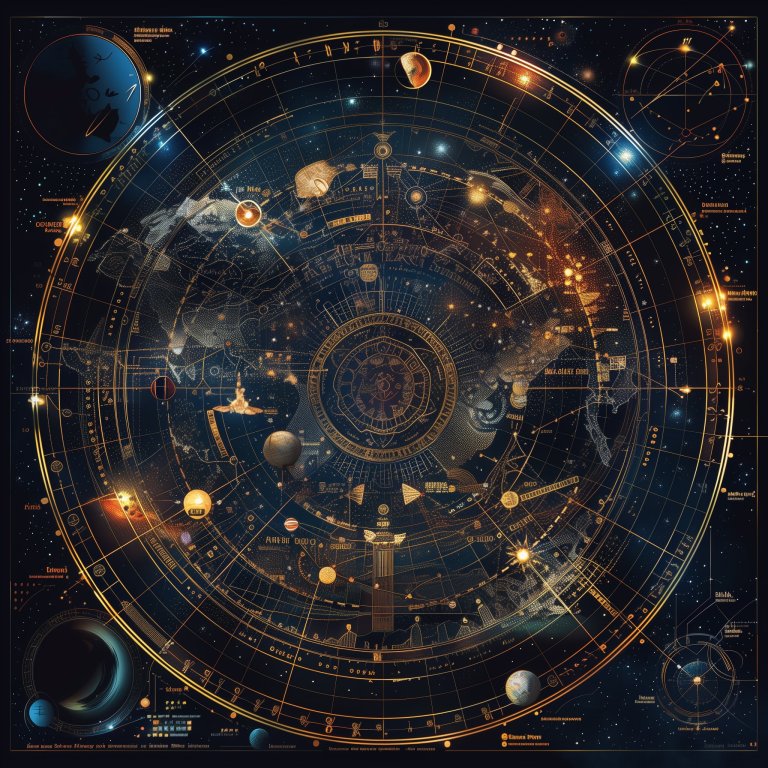
Here’s How To ACTUALLY Read A Birth Chart
If all you know about astrology is that Aries are angry and Pisces cry a lot, this in-depth esoteric world will understandably appear intimidating. The depth of knowledge you can gain from this ancient practice, which predates all major world religions, is endless. You can study astrology for your entire life and only scratch the surface.

Astrology provides us with the tools to make correlations between planetary cycles and the global events here on earth that reflect them a little too often than coincidence would allow for. It enables us to predict potential conflicts and challenges within interpersonal relationships. It helps us to understand our own inherent nature, influenced both by genetic and epigenetic circumstances, and harness our strengths and weaknesses to reach our highest potential. It can even help you locate a lost earring under your bed, or map out a path to finding your dog after he’s run away.
These are all different branches of study, known as mundane astrology, synastry, psychological astrology, and horary astrology, respectively. But none of these are anywhere close to introductory, so we will bypass them for now and focus solely on the bare bones of astrology: how to read a natal chart.
The word “natal” comes from the Latin nativus, which means “birth.” The first zodiac wheel dates to 700 B.C., and it was remarkably sophisticated for its time, including both planetary placements and houses. (More on houses later.) Today, we use essentially the same format. It has held up for centuries for one reason: it works.
Let’s break it down.
Get your exact birth time, including time, date, and place.
You are a living, breathing representation of the specific moment in time that you were born. The cosmos shift drastically every four minutes or so, so extremely accurate data is necessary. If your mom always approximates your birth time to an exact hour, it’s likely it’s been rounded up or down, and this can skew the data and present you with a totally incorrect chart. Check your birth certificate or a baby book to be absolutely sure.
Understand that the zodiac wheel is a map.
At first glance, a zodiac wheel, with its colorful geometric shapes, lines, and patterns, looks utterly confusing. It makes more sense to visualize it as a map of the skies: one that shows you exactly what was going on above you at the moment you took your first breath.
Start with the ascendant.
The ascendant, also known as the rising sign, is placed at the furthest left hand side of the zodiac wheel. It is your ascendant, which represents your physical self. It’s the way you appear to the outside world, which can be in complete contrast to who you are internally; unless you have the same sun and rising sign, what you see is rarely what you get. Opposite the ascendant is the descendent, which represents the type of people you attract—and often offers clues as to the characteristics of your future spouse. The line dividing the lower and upper quadrants is a visual representation of the horizon at your time of birth.
Work your way around the wheel.
While the analog clock’s design was inspired by the zodiac wheel, you’ll want to read the latter counterclockwise, with the quadrants beneath the horizon representing the most private parts of your chart and those above the horizon representing those parts of your life that are on full display to the world. Everything from the second to sixth house are considered beneath the horizon and therefore hidden from public view. The seventh to twelfth houses, on the other hand, tend to be highly visible. Extroverts and public-facing individuals tend to have a cluster of planets in the upper quadrants. Introverts who work behind the scenes, such as academics and researchers, usually have more placements in the lower quadrants.
Learn what each sign represents.
If you’ve only been using Co-Star, you might be surprised to learn that you do, in fact, have every single zodiac sign in your chart. Some houses might be empty, but you’ll still see, for instance, Aries ruling your fifth house if you’re a Sagittarius rising, or Gemini ruling your tenth house if you’re a Virgo rising. Each sign possesses its own unique qualities, and they will exert this power over certain areas of your life, depending on which houses they rule and if you have any planets located there.
Learn what each planet means and where its glyph is located in your chart.
When you pull up your birth chart, you will immediately notice a plethora of strange symbolism. It might look like hieroglyphics to the untrained eye, but it is easy enough to memorize each symbol, known as a glyph. These are pictorial depictions of each planet, along with some commonly known asteroids and fixed placements. Each signifies something different: the sun, moon, Mercury, Mars, Venus, Jupiter, Saturn, Neptune, and Pluto. Often, you will see the glyph for Black Moon Lilith, the lunar nodes, and the Part of Fortune as well.
Learn your sun, moon, and rising.
Horoscopic astrology since the 1960s has placed a strong emphasis on the sun sign, ignoring the influence of the rising sign entirely. This simplification has led to a fundamental misunderstanding of what astrology is. While your sun sign is undeniably important, as it reflects your vitality and hints at the direction your soul is meant to go in this lifetime, it is far from the most important sign in your chart. Your moon sign describes your relationship with your mother, your emotional self, and the way you nurture yourself. And of course, your rising sign shows others how you move in the world. The sun, moon, and rising together comprise your “big three” dominant signs of your birth chart
Finally, learn about houses.
We touched briefly on the ascendant sign earlier. Your rising sign is placed in the first house and sets the stage for your entire chart—and life blueprint. Some people have planets placed in their first house along with the ascendant, and for these individuals there may appear to be a secondary influence at play in the way they show up in the world. For instance, someone with Mars in the first house might be highly athletic, while Jupiter in the first might lend someone an adventurous spirit. However, there are eleven more houses to work through, each controlling its own domain.
Here’s a quick but certainly not comprehensive summary:
The first house rules your appearance, the second house rules your money, the third house rules your siblings and neighbors, the fourth house rules your family, the fifth house rules your creativity and children, the sixth house rules your work life, the seventh house rules your partnerships, the eighth house rules other people’s money, the ninth house rules your religion and foreign affairs, the tenth house rules your career, the eleventh house rules your community, and the twelfth house rules your dreams and intuition.
